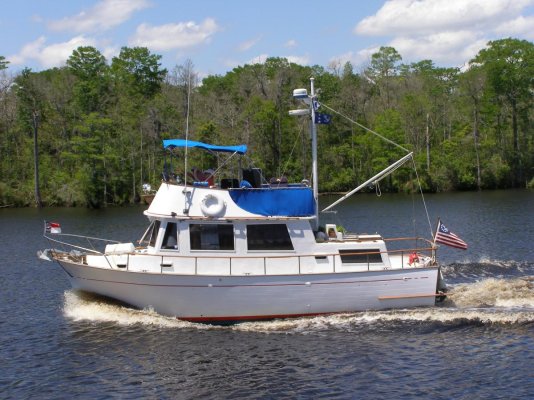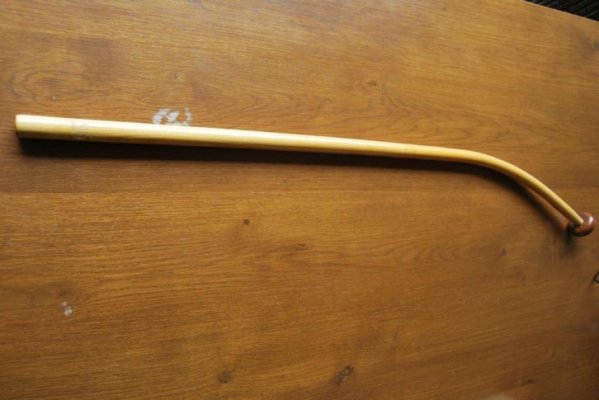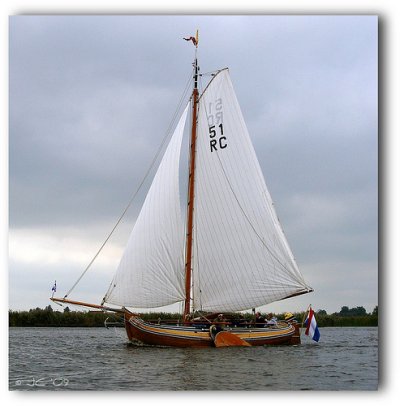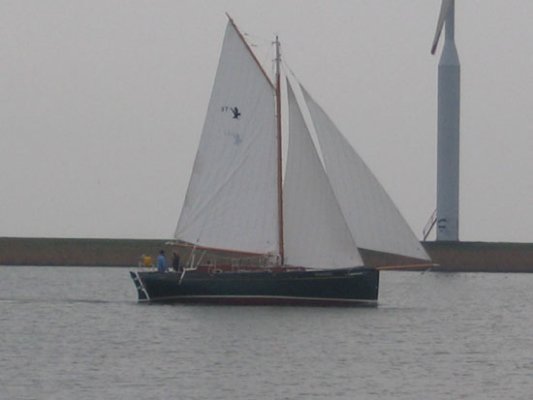You are using an out of date browser. It may not display this or other websites correctly.
You should upgrade or use an alternative browser.
You should upgrade or use an alternative browser.
Flag etiquette
- Thread starter RT Firefly
- Start date
The friendliest place on the web for anyone who enjoys boating.
If you have answers, please help by responding to the unanswered posts.
If you have answers, please help by responding to the unanswered posts.
Has anyone ever been fined or cited for improper flag placement?
In 2001, we arrived in Australia right after midnight. About an hour later another vessel came in and rafted along side us. When Customs, Immigrations and Quarantine arrived in the morning to check us in, the other vessel was not flying the "Q" flag and they were cited.
In 2004, we arrived from the Bahamas in North Carolina flying the "Q" flag. On our way up the Cape Fear River to Wilmington, at least 15 enforcement vessels went past us; CG, Sheriff's, Homeland, etc. Not one asked any questions. At the time we were a little disappointed. We got the idea that they didn't know what they were looking at or didn't care.
One other point, IF your vessel is a US documented vessel, you are required to fly the US Flag. .
Where did you dig that up?

Many of the boats at my marina are US documented boats and they may or may not fly a US flag. I have one on a staff at the rear of the flybridge and I ma or may not uncover it. I usually do uncover it while underway but it's covered as I write this.
I have never been stopped by the flag police and I've never even seen the flag police.
Someone on another forum had a flag pole with a "Christian" flag flying above the US flag as his avitar. I questioned him and he stated that God was above country.
Like I said, no flag police.
Blue Heron
Guru
Rwidman,
Glad you read all posts before jumping in.
As I later posted, I couldn't find it definitive. It remains my understanding that documented vessels are US "Flagged" vessels and as such are entitled to fly the US Flag and Should. I couldn't find the hard print showing requirement.
As for Flag Police, we each have our own demons, hope you can find some peace out on the waterways with out too much worry.
Glad you read all posts before jumping in.
As I later posted, I couldn't find it definitive. It remains my understanding that documented vessels are US "Flagged" vessels and as such are entitled to fly the US Flag and Should. I couldn't find the hard print showing requirement.
As for Flag Police, we each have our own demons, hope you can find some peace out on the waterways with out too much worry.
Blue Heron
Guru
Psneeld, good examples. Nice explanation. Not sure of the reference your citing. Still not in keeping with US Code. But since the Flag Police are no where in sight, people do what they do.
To each his own I suppose.
To each his own I suppose.
Last edited:
psneeld
Guru
Psneeld, good examples. Nice explanation.
Thanks...just passing along what I believe to be the proper etiquette.
I got into it before on here about flags...but as most things in life...not much I say changes things so I just lead by example.
There are lot's of people and places that don't use the gaff...they just believe it to be wrong flying the American flag lower than others...they also usually aren't nautically oriented... so they don't understand the concept that the flag is really on a different pole (spar), it's by itself and the only/highest on the halyard.
There are plenty of examples in the press all the time about someone complaining about some organization flying the American flag on the gaff...oh well
Last edited:
Blue Heron
Guru
Roger.
Thanks for sharing
Thanks for sharing
Forkliftt
Guru
- Joined
- Oct 6, 2007
- Messages
- 2,450
- Location
- USA
- Vessel Name
- KnotDoneYet
- Vessel Make
- 1983 42' Present Sundeck
Good point Larry, on land or at sea.An other part of flag etiquette is to make sure your flag is in good condition. I was a line handler going through the Canal and the advisor made the captain take down Panama's courtesy flag. It was faded and frayed. His comment was flying a flag like that is an insult.
We have also been in countries where the Port Captains requires you to remove their flag at dusk.
It "should" be at Position 5 - Port SpreaderIf I wish to fly a state flag, where should it be flown?
It is not one of the "3 marks of identity" of your vessel: 1) her country, 2) her fleet, or 3) her master (you).
As explained in Linday Lord's "Nautical Etiquette and Customs", this is flag protocol: 1) the ensign, 2) the burgee, 3) the private signal (this corresponds to the 3 marks above), 4) the second club signal, and 5) ornamental whimsies.
Your state flag is thus an ornamental whimsy (assuming, of course, that your vessel is not part of your state's "fleet"!)
Then there are the positions: 1) aft of midships, either on a staff at the stern or the peak of the aftmost gaff, 2) bow on powerboats or foremost masthead on sailbaots, 3) signal masthead on powerboats, second mast aft on sailboats, 4) main starboard spreader (on any boat with a mast), 5) port spreader.
I hope that clears things up!

ARoss
Guru
- Joined
- Nov 17, 2007
- Messages
- 637
- Vessel Name
- My Yuki
- Vessel Make
- 1973 Marine Trader 34
psneeld
Guru
For lack of any better written guidance I would follow the USPS guide...
6.02 If the Maryland flag is flown on sailing vessels:
Sloops, cutters, and schooners
While underway - sailing vessels with one mast should fly the U.S. Ensign at the stern staff, or two-thirds of the way up the leech of the mainsail (or at the top of the leech, if gaff-rigged). The Maryland flag should fly at the starboard spreader, or on the forward mast of a schooner.
While at anchor - The U.S. Ensign should fly from the stern staff and the Maryland flag from the starboard spreader
Yawls and ketches
While underway - The U.S. Ensign should fly at the stern staff or at a position two-thirds up the leech of the mizzen sail (or at the peak of the leech of the mizzen sail, if gaff-rigged). The Maryland flag should fly at the starboard spreader ("at the starboard spreader" means the spreader on the most forward mast if more than one and from the most outboard hoist of that spreader).
While at anchor - The U.S. Ensign should fly from the stern staff and the Maryland flag from the starboard spreader.
6.03 If the Maryland flag is flown on motorboats:
While underway and at anchor - The U.S. Ensign should fly from the stern staff and the Maryland flag may be flown from the forestaff in lieu of a yacht club burgee.
Motorboats with auxiliary masts should follow the rules for sailboats.
6.02 If the Maryland flag is flown on sailing vessels:
Sloops, cutters, and schooners
While underway - sailing vessels with one mast should fly the U.S. Ensign at the stern staff, or two-thirds of the way up the leech of the mainsail (or at the top of the leech, if gaff-rigged). The Maryland flag should fly at the starboard spreader, or on the forward mast of a schooner.
While at anchor - The U.S. Ensign should fly from the stern staff and the Maryland flag from the starboard spreader
Yawls and ketches
While underway - The U.S. Ensign should fly at the stern staff or at a position two-thirds up the leech of the mizzen sail (or at the peak of the leech of the mizzen sail, if gaff-rigged). The Maryland flag should fly at the starboard spreader ("at the starboard spreader" means the spreader on the most forward mast if more than one and from the most outboard hoist of that spreader).
While at anchor - The U.S. Ensign should fly from the stern staff and the Maryland flag from the starboard spreader.
6.03 If the Maryland flag is flown on motorboats:
While underway and at anchor - The U.S. Ensign should fly from the stern staff and the Maryland flag may be flown from the forestaff in lieu of a yacht club burgee.
Motorboats with auxiliary masts should follow the rules for sailboats.
BruceK
Moderator Emeritus
- Joined
- Oct 31, 2011
- Messages
- 13,347
- Vessel Name
- Sojourn
- Vessel Make
- Integrity 386
Where did you moor/anchor awaiting Sydney Customs, Q flag displayed? Is there a designated area? The bay referred to as "Quarantine" inside the Heads to stbd ( where once people were off loaded for a week to see if they became sick), comes to mind.BruceKIn 2001, we arrived in Australia right after midnight. About an hour later another vessel came in and rafted along side us. When Customs, Immigrations and Quarantine arrived in the morning to check us in, the other vessel was not flying the "Q" flag and they were cited.
.
markpierce
Master and Commander
- Joined
- Sep 25, 2010
- Messages
- 12,557
- Location
- USA
- Vessel Name
- Carquinez Coot
- Vessel Make
- penultimate Seahorse Marine Coot hull #6
Ensign aft, Carolina State flag on the bow pulpit, Yacht Club burgee and officer flag on the spreader.
Should we expect you to be a perfect mariner?
A couple of times I've reported to yacht club officials of their members not behaving in proper maritime manner such as not showing lights or making sounds in limited visibility, but the officials never responded.
Perhaps sailors should be reluctant showing their clubs' colors, or perhaps not?
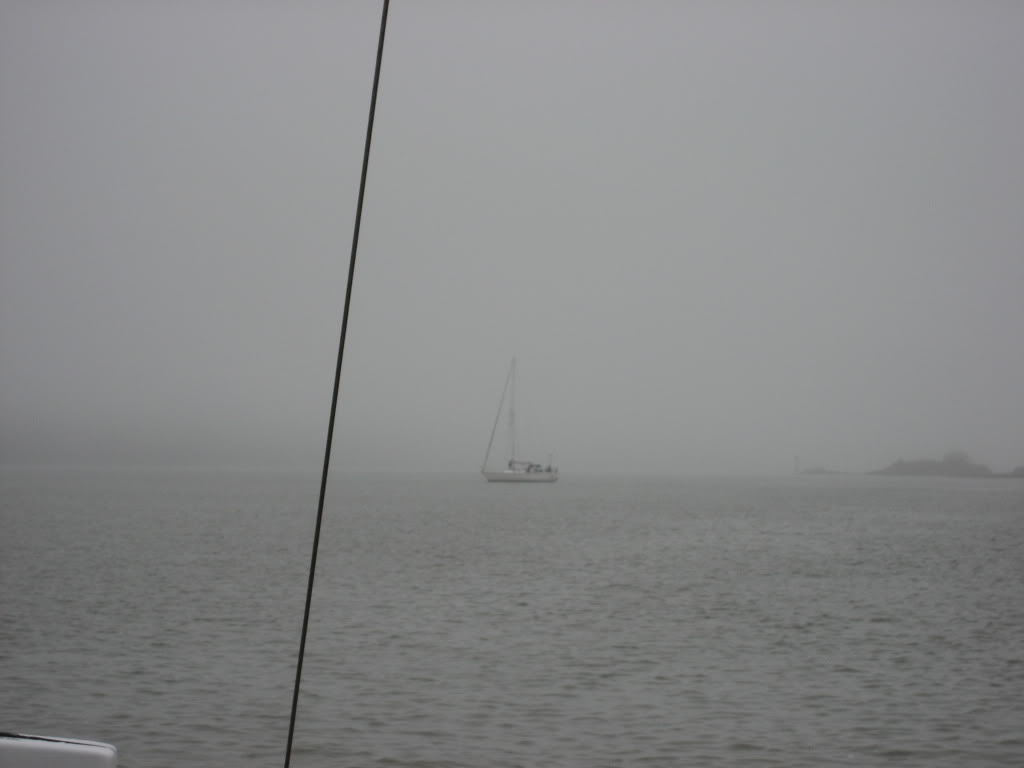
View from anchor-light-displaying Carquinez Coot off Benicia, CA boat harbor, November 2011. Had expected the motoring sailboat to show a red side light and higher white light toward me as well as periodically sounding a prolonged signal, but I was disappointed.
Last edited:
Where did you moor/anchor awaiting Sydney Customs, Q flag displayed? Is there a designated area? The bay referred to as "Quarantine" inside the Heads to stbd ( where once people were off loaded for a week to see if they became sick), comes to mind.BruceK
Bruce: We cleared in at Scarborough, NW Morton Bay, Queensland. They had a Customs/Quarantine Dock that was fenced in. Australia takes their Quarantine/Customs/Immigrations very seriously.
CPseudonym
Moderator Emeritus
I am reviving this thread to find out the proper display of an Air Force flag on a boat? My eldest son is currently serving and my middle son has enlisted and is wanting us to fly the flag.
Old Glory is appropriately displayed on our stern staff as it should be and we have an existing bow staff. I gather yacht club burgees would be flown on the bow staff but wonder if displaying the USAF flag in that position would be considered a breach of proper etiquette?
As an express cruiser we have limited flag placement options and no mast or halyards. We prefer to adhere to traditional protocol if possible.
Old Glory is appropriately displayed on our stern staff as it should be and we have an existing bow staff. I gather yacht club burgees would be flown on the bow staff but wonder if displaying the USAF flag in that position would be considered a breach of proper etiquette?
As an express cruiser we have limited flag placement options and no mast or halyards. We prefer to adhere to traditional protocol if possible.
- Joined
- Mar 17, 2012
- Messages
- 4,279
- Location
- Australia
- Vessel Name
- Insequent
- Vessel Make
- Ocean Alexander 50 Mk I
I'm curious about some flag positions as well. I'm Australian registered so I fly either blue (normal) or red Australian ensign at the stern. But where to fly the US flag as a courtesy flag? A reasonably knowledgeable friend advised:
1. Courtesy flag not to be higher than national flag
2. No courtesy flag at the bow, that is rude and insulting.
I don't have a gaff, so should it be national flag at top of mast, courtesy flag on starboard spreader and stern post empty?
1. Courtesy flag not to be higher than national flag
2. No courtesy flag at the bow, that is rude and insulting.
I don't have a gaff, so should it be national flag at top of mast, courtesy flag on starboard spreader and stern post empty?
Moonstruck
Guru
- Joined
- Nov 27, 2008
- Messages
- 8,276
- Location
- USA
- Vessel Name
- Moonstruck
- Vessel Make
- Sabre 42 Hardtop Express
I'm curious about some flag positions as well. I'm Australian registered so I fly either blue (normal) or red Australian ensign at the stern. But where to fly the US flag as a courtesy flag? A reasonably knowledgeable friend advised:
1. Courtesy flag not to be higher than national flag
2. No courtesy flag at the bow, that is rude and insulting.
I don't have a gaff, so should it be national flag at top of mast, courtesy flag on starboard spreader and stern post empty?
Fly the US courtesy flag from the starboard spreader or if not one a starboard antenna. Your national ensign should be flown at the gaff or stern staff. I know of no rule about the courtesy flag has to not be higher than the national flag.
Last edited:
Conrad
Guru
- Joined
- Oct 19, 2007
- Messages
- 1,972
- Location
- Canada
- Vessel Name
- Blue Sky
- Vessel Make
- Nordic Tugs 42 Hull #001
Fly the US courtesy flag from the starboard spreader or if not one a starboard antenna. Your national ensign should be flown at the gaff or stern staff. I know of no rule about the courtesy flag has to not be higher than the national flag.
That is exactly my understanding as well.
Andy G
Hospitality Officer
- Joined
- Sep 20, 2010
- Messages
- 1,897
- Location
- Australia
- Vessel Name
- Sarawana
- Vessel Make
- IG 36 Quad Cabin
According to my old mate, a retired RN historian(yep it's true)the 'no higher protocol' refers to national flags raised side by side on land, it does not apply to maritime vessels.
He maintains that the courtesy flag should be flown on the starboard yard arm or gaff. I asked him what if the vessel had no yard arm or gaff, "shouldn't be on the bloody water then" was his reply.He's a bit old school.
He maintains that the courtesy flag should be flown on the starboard yard arm or gaff. I asked him what if the vessel had no yard arm or gaff, "shouldn't be on the bloody water then" was his reply.He's a bit old school.
Nice topic, it seems the "rules" in the US are more or less the same as in Europe. This is what i found.
The Flag Advisor
Flag etiquette can be arcane and boggling. We surveyed Chapman’s Piloting and our flag maker for guidance and came up with some general recommendations for boaters:
Courtesy and National Flags
As a gesture of courtesy, cruisers should fly a foreign nation’s flag when they enter and operate in its waters.
Rule No. 1—There are no real rules. Customs observed in various foreign waters differ from each other. We’ve seen cases where not flying or flying a courtesy flag improperly causes some awkward moments; you may be regarded as impolite, but nothing more. In others, it’s local law to fly the flag. Officials can—and do—impound passports or assess fines until the proper flag—which, of course, can only be purchased locally at great expense—is flying on board. If in doubt, inquire of other cruisers and observe other craft from your country for guidance.
Do not fly a courtesy flag until your vessel is properly cleared by customs and immigration. Until clearance is complete, fly the yellow Q (quarantine) flag.
On a mastless powerboat, the courtesy flag replaces any flag that is normally flown at the bow.
If a powerboat has a mast with spreaders, the courtesy flag is flown at the starboard spreader.
On a two-masted powerboat, the courtesy flag displaces any flag normally flown at the forward spreader.
On a sailboat, the courtesy flag is flown at the starboard spreader. If the sailboat has more than one mast, the courtesy flag is flown from the starboard spreader of the forward mast.
Courtesy flags are usually Civil Ensigns—not the national flag of the country. Not every country has a civil ensign. However, most former British colonies do; it is usually the red variant of the flag. It’s considered a horrible breach of etiquette to fly the blue national flag. So, if the flag that we catalog doesn’t look exactly like the national flag that you remember, it’s probably a civil ensign.
Don’t fly a foreign courtesy flag after you return to U. S. waters. It may show that you’ve
’been there,’ but it’s not proper etiquette.
Generally, the vessel’s national flag is flown from the stern (or leach) when a courtesy flag displaces it.
It’s better form for U. S. vessels to fly the U. S. flag (the “stars and stripes” with a full complement of 50 stars) at the stern or gaff or leech, rather than a Yacht Ensign. If you want to fly a Yacht or USPS Ensign, do so from the port spreader on a sailboat. If there are multiple flag halyards available on the starboard spreader, the Yacht or USPS Ensign is flown there, inboard from the courtesy ensign.
Any citizen of any state may fly the flag of that state unless doing so is specifically prohibited. It should be flown at the main masthead in place of any private, yacht club, or officer’s flag. On a mastless boat, a state flag flies from either the bow or radio antenna.
No flag—state, heritage, Confederate, pirate, gag, or otherwise—except for the vessel’s national flag, should EVER fly from the stern of your vessel. This is considered a place of honor, for the vessel’s national flag and no other.
Sizing Flags
Chapman’s recommends the following:
The flag at the stern of your boat—U. S. Ensign, Yacht Ensign, USPS Ensign, or vessel’s national flag—should be one inch on the fly for every foot of overall vessel length (e. g. 48” flag for a 48’ foot vessel).
Other flags—club burgees, private signals, or courtesy flags—should be ½” for every foot of overall vessel length.
Christine Davis differs with a somewhat more practical approach. She suggest that you let your eye be your guide. Generally, yachts up to 50’ in length look properly “dressed” with a 16” x 24” ensign and 12” x 18” courtesy flags. Size up one step for every 25-or-so additional feet in length. If you prefer the look of larger flags, go ahead—just make sure that there is a clear 360-degree fly from your halyards. Otherwise, your flags will soon be in tatters.
Other Flags
There are a number of flags that once were used on large yachts with professional crews (such as owner absent, cocktail, meal, etc.). Others are still common:
Diving Flags. There are two flags flown by diving operations: a red flag with a single diagonal stripe of white and International Code Flag “A”. It is generally no proper to fly dive flags on shore.
Quarantine Flag. International Code Flag “Q” is flown when entering a foreign port (except Canada and a few others) or when returning to a U. S. port from a foreign cruise. It signals to customs and immigration officials that you request clearance. Take it down and replace it with a courtesy flag after formalities are complete.
Union Jack. A rectangular blue flag with 50 stars, the Union Jack may be flown as follows:
Flying only at the jack staff—the bow staff on modern craft
Flying only during the day
Flying only when moored
Flying only on Sundays, national holidays, or when dressing ship
Dressing Ship
On national holidays, at regattas, and on other special occasions, yachts often “dress ship,” displaying a decorative collection of International Code signal flags. The following conventions are recommended:
Dress ship at 0800 and keep dress until nightfall.
Keep the dressed ship moored, except for its maiden or final voyages or for participation in parades.
Hoist the Ensign at the stern. Display the Union Jack (if desired) at the bow.
Hoist a rainbow of International Code Flags from the waterline forward to the waterline aft from stem (or bowsprit) to the masthead(s).
Bend on flags and pennants alternately. Since there are twice as many letter as numeral pennants, it is regarded as good practice to follow the following sequence:
Two flags, one pennant, two flags, one pennant, and so on
A popular example with an appealing color pattern is (from forward): AB2, UJ1, KE3, GH6, IV5, FL4, DM7, PO Third Repeater, RN First Repeater, ST Zero, CX9, WQ8, ZY Second Repeater.
Consult web page notes for signal flag set coverage.
Link: Flag etiquette
Cees
The Flag Advisor
Flag etiquette can be arcane and boggling. We surveyed Chapman’s Piloting and our flag maker for guidance and came up with some general recommendations for boaters:
Courtesy and National Flags
As a gesture of courtesy, cruisers should fly a foreign nation’s flag when they enter and operate in its waters.
Rule No. 1—There are no real rules. Customs observed in various foreign waters differ from each other. We’ve seen cases where not flying or flying a courtesy flag improperly causes some awkward moments; you may be regarded as impolite, but nothing more. In others, it’s local law to fly the flag. Officials can—and do—impound passports or assess fines until the proper flag—which, of course, can only be purchased locally at great expense—is flying on board. If in doubt, inquire of other cruisers and observe other craft from your country for guidance.
Do not fly a courtesy flag until your vessel is properly cleared by customs and immigration. Until clearance is complete, fly the yellow Q (quarantine) flag.
On a mastless powerboat, the courtesy flag replaces any flag that is normally flown at the bow.
If a powerboat has a mast with spreaders, the courtesy flag is flown at the starboard spreader.
On a two-masted powerboat, the courtesy flag displaces any flag normally flown at the forward spreader.
On a sailboat, the courtesy flag is flown at the starboard spreader. If the sailboat has more than one mast, the courtesy flag is flown from the starboard spreader of the forward mast.
Courtesy flags are usually Civil Ensigns—not the national flag of the country. Not every country has a civil ensign. However, most former British colonies do; it is usually the red variant of the flag. It’s considered a horrible breach of etiquette to fly the blue national flag. So, if the flag that we catalog doesn’t look exactly like the national flag that you remember, it’s probably a civil ensign.
Don’t fly a foreign courtesy flag after you return to U. S. waters. It may show that you’ve
’been there,’ but it’s not proper etiquette.
Generally, the vessel’s national flag is flown from the stern (or leach) when a courtesy flag displaces it.
It’s better form for U. S. vessels to fly the U. S. flag (the “stars and stripes” with a full complement of 50 stars) at the stern or gaff or leech, rather than a Yacht Ensign. If you want to fly a Yacht or USPS Ensign, do so from the port spreader on a sailboat. If there are multiple flag halyards available on the starboard spreader, the Yacht or USPS Ensign is flown there, inboard from the courtesy ensign.
Any citizen of any state may fly the flag of that state unless doing so is specifically prohibited. It should be flown at the main masthead in place of any private, yacht club, or officer’s flag. On a mastless boat, a state flag flies from either the bow or radio antenna.
No flag—state, heritage, Confederate, pirate, gag, or otherwise—except for the vessel’s national flag, should EVER fly from the stern of your vessel. This is considered a place of honor, for the vessel’s national flag and no other.
Sizing Flags
Chapman’s recommends the following:
The flag at the stern of your boat—U. S. Ensign, Yacht Ensign, USPS Ensign, or vessel’s national flag—should be one inch on the fly for every foot of overall vessel length (e. g. 48” flag for a 48’ foot vessel).
Other flags—club burgees, private signals, or courtesy flags—should be ½” for every foot of overall vessel length.
Christine Davis differs with a somewhat more practical approach. She suggest that you let your eye be your guide. Generally, yachts up to 50’ in length look properly “dressed” with a 16” x 24” ensign and 12” x 18” courtesy flags. Size up one step for every 25-or-so additional feet in length. If you prefer the look of larger flags, go ahead—just make sure that there is a clear 360-degree fly from your halyards. Otherwise, your flags will soon be in tatters.
Other Flags
There are a number of flags that once were used on large yachts with professional crews (such as owner absent, cocktail, meal, etc.). Others are still common:
Diving Flags. There are two flags flown by diving operations: a red flag with a single diagonal stripe of white and International Code Flag “A”. It is generally no proper to fly dive flags on shore.
Quarantine Flag. International Code Flag “Q” is flown when entering a foreign port (except Canada and a few others) or when returning to a U. S. port from a foreign cruise. It signals to customs and immigration officials that you request clearance. Take it down and replace it with a courtesy flag after formalities are complete.
Union Jack. A rectangular blue flag with 50 stars, the Union Jack may be flown as follows:
Flying only at the jack staff—the bow staff on modern craft
Flying only during the day
Flying only when moored
Flying only on Sundays, national holidays, or when dressing ship
Dressing Ship
On national holidays, at regattas, and on other special occasions, yachts often “dress ship,” displaying a decorative collection of International Code signal flags. The following conventions are recommended:
Dress ship at 0800 and keep dress until nightfall.
Keep the dressed ship moored, except for its maiden or final voyages or for participation in parades.
Hoist the Ensign at the stern. Display the Union Jack (if desired) at the bow.
Hoist a rainbow of International Code Flags from the waterline forward to the waterline aft from stem (or bowsprit) to the masthead(s).
Bend on flags and pennants alternately. Since there are twice as many letter as numeral pennants, it is regarded as good practice to follow the following sequence:
Two flags, one pennant, two flags, one pennant, and so on
A popular example with an appealing color pattern is (from forward): AB2, UJ1, KE3, GH6, IV5, FL4, DM7, PO Third Repeater, RN First Repeater, ST Zero, CX9, WQ8, ZY Second Repeater.
Consult web page notes for signal flag set coverage.
Link: Flag etiquette
Cees
Last edited:
Gulfstar 36
Senior Member
Interesting post. But I’m ashamed to fly the flag of my state! If I had one I would cut it into strips and use it in the head. One other note on flags and pendants. On USN ships the church pendant is the only thing flown about the ensign. God before Country I presume.
Tingum
Senior Member
Ah, one of my favorite subjects! Flag etiquette is like table manners, some people have them, others do not.
Blue Heron
Guru
Fly your ensign from the stern and the Air Force flag pennant, from the bow. If you have a mast the stbd spreader is fine.
sbu22
Guru
- Joined
- Mar 16, 2011
- Messages
- 1,253
- Location
- US
- Vessel Name
- Panache
- Vessel Make
- Viking 43 Double Cabin '76
psneed: Just had a flashback on account of your post - it went "Sweepers, man your brooms. Give the ship a clean sweep down fore and aft. Sweep down all lower decks, ladder backs, and passageways. Dump all garbage clear of the fantail. Sweepers".
Guess the "garbage over the fantail" part dates me. I'm sure it goes to the recycle unit now.
Guess the "garbage over the fantail" part dates me. I'm sure it goes to the recycle unit now.
RED
Senior Member
- Joined
- Jun 28, 2008
- Messages
- 182
I note that Marin has it wrong in his picture. First of all, his boat has a cargo mast, not a sailing mast, so there is no gaff to fly the flag from. Also, even is one were to argue that the cargo mast can be used for a steadying sail, Marin is not flying the flag from what would be the gaff, because his flag is BELOW the cargo boom, and therefore being treated like a cargo lift, not a place of honor. I have seen sailing sloops attach a flag about 2/3 up the leech of the main, attempting to simulate a gaff position, but they are not gaff rigged.
CPseudonym
Moderator Emeritus
Fly your ensign from the stern and the Air Force flag pennant, from the bow. If you have a mast the stbd spreader is fine.
Thanks BH. Jives with my original thoughts was just checking first to avoid a protocol embarrassment. Flag etiquette is something we like to be respectful of and could not find an answer for our particular situation.
FF
Guru
- Joined
- Oct 12, 2007
- Messages
- 22,552
The only flag allowed to fly above the US Ensign is the Church Pennant and only when observing service.
In most countries NOT flying the flag of that nation at the stbd spreader (or similar for motorboats) is an act of WAR !!!
At a minimum there are fines and penalties for disrespecting the country you are visiting.
In most countries NOT flying the flag of that nation at the stbd spreader (or similar for motorboats) is an act of WAR !!!
At a minimum there are fines and penalties for disrespecting the country you are visiting.
- Joined
- Apr 15, 2008
- Messages
- 13,731
- Location
- California Delta
- Vessel Name
- FlyWright
- Vessel Make
- 1977 Marshall Californian 34 LRC
My daughter presented me the large US Flag shown flying from my radar mast. This flag was flown over the US Capitol on the day I retired.
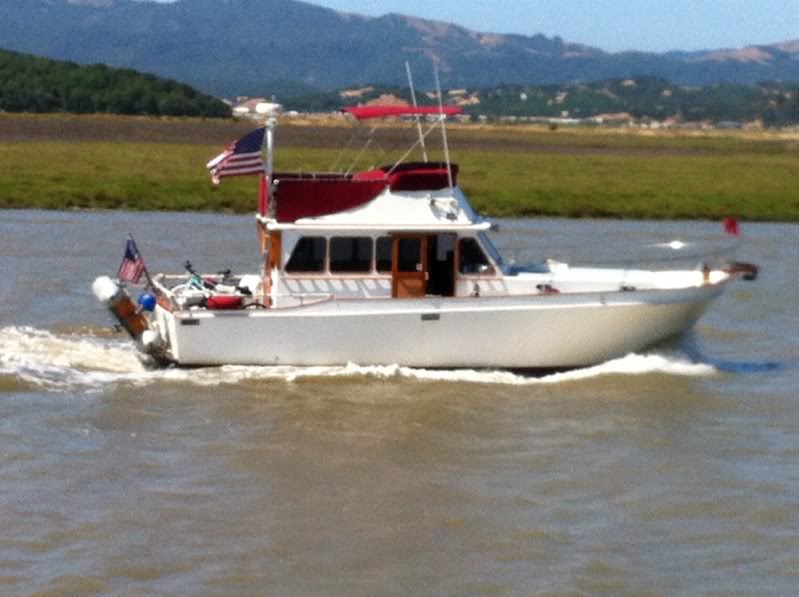
I, too, want to comply with proper flag etiquette but find no prohibition to this display, in addition to flying the US flag from my stern flagstaff. Is anyone aware of any issues with this display?

I, too, want to comply with proper flag etiquette but find no prohibition to this display, in addition to flying the US flag from my stern flagstaff. Is anyone aware of any issues with this display?
Similar threads
- Replies
- 2
- Views
- 490
- Replies
- 45
- Views
- 5K

